Let there be light – multitasking
Since the TiRStove is insulated, you can easily boil drinking water and charge your equipment while fishing in a canoe. With the PPX you will have 10W of power enough to supply a very very strong flashlight/searchlight directly ( if you were too lazy to charge the batteries ;-)
The TiRStove with "Agge's fire-spider mod" combined with 1Charger & PPX charging an 10Ah LiFePO4 battery

Performance
2L of water at 7°C will start to simmer in 10 min and boil heavily in 16 min, stove "warm" at start ..and outside temp -2°C. ( A cold stove will need an extra 10 min ) Almost the same boil result was achieved without insulation. I noticed an increased ext. stove temperature from 45 to 70°C and a bit more smoke
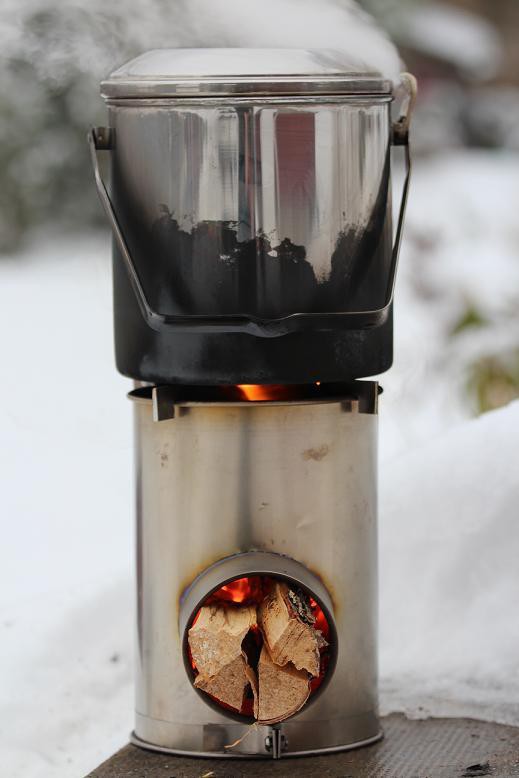
** best boil time, is 2.8L of 7°C water to boil heavily in 11 min with no insulation (just air ) and ext. stove temp 100 °C, outside temp 1°C no wind and 10 mm pot-cross
History
A precursor to the rocket stove was the argand lamp (1780). Dr. Larry Winiarski, Technical Director of Aprovecho, began developing the Rocket Stove in 1980 based on a VITA stove, designed by Sam Baldwin, and rediscovered the principles of the systems developed by the Romans in hypocaust heating.
How it works
by inventor Dr. Larry Winiarski
"Rocket stove designs consider both combustion efficiency and heat transfer efficiency. A key feature of Rocket Stoves is that the fuel is easily metered in so that only as much surface is heated as necessary for the power production, for wood this means that only the ends are gasified and burn in the vertical combustion chamber. This is in effect a very hot chimney that pulls air in at a moderate velocity. In the horizontal feed rocket stove the wood rests on a shelf with the ends overhanging, forming a grate, or they can rest on a real grate at that position. Some air comes from underneath the shelf in the feed tunnel and up through the glowing ends of the sticks where gasification takes place. "Secondary air" comes in over the shelf and in between the sticks. This air keeps the sticks cool and helps keep the flames blown into the vertical chimney so that the fire does not back out the feed tunnel.
..
In convection heat transfer as packets of hot molecules touch the surface of the pot,they quickly cool down and slightly raise the surface temperature of the pot as they reach a new equilibrium. Since the molecules and the pot's surface are essentially at the same temperature they can no longer transfer heat to the pot's surface. So it is better that they be replaced by a new fresh group of hot molecules. This is why we want the hot combustion gases to slide as close as possible without choking the flow. We do this by keeping the momentum of the gas flow as constant as possible.
...
Keeping the cross sectional area constant under the pot means that we can taper the slope of the top of the stove. This gets the gases to flow closer and closer to the bottom of the pot. When we put a skirt around the pot with a gap adjusted to have the same cross sectional area we heat the sides of the pot effectively. As the gases cool down, they become more dense, so the cross sectional area could be reduced slightly and still have the same momentum. This is the primary purpose of the pot skirt. Some say that the pot skirt is a wind screen or that it is used to control excess air. This is a misunderstanding of it's primary purpose"
-Dr. Larry Winiarski "Combustion and Heat Transfer in a Rocket Stove System"
More reading
Stove Design - Stove Design - Aprovecho Research Center
Global Modeling and Testing of Rocket Stove Operating Variations
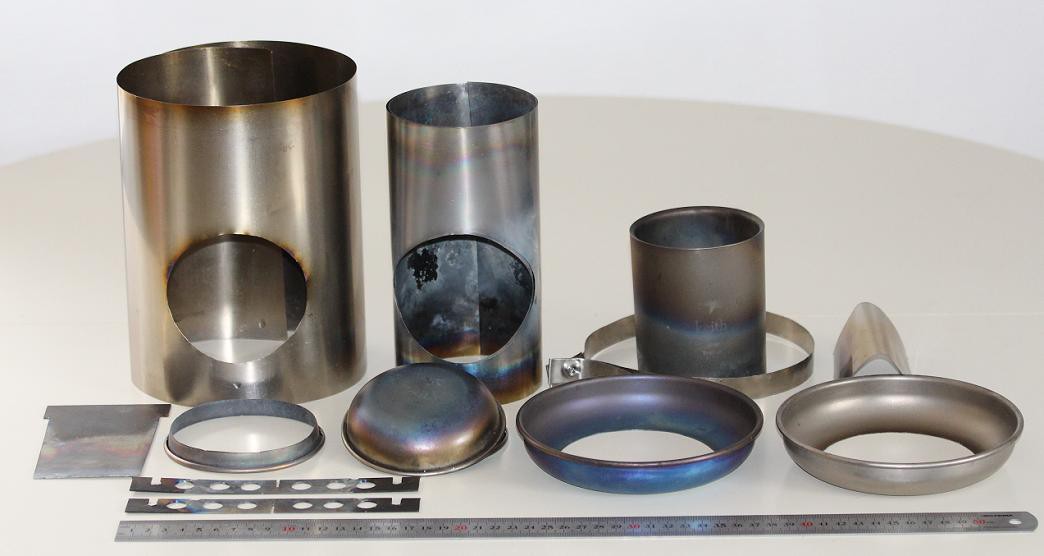
Durable
The TiRStove is constructed to be durable, efficient and lightweight. I have chosen double layers of 0.2 titanium sheets in the chimney in order to withstand the long term exposure to a high...
Read more » mr.jb
mr.jb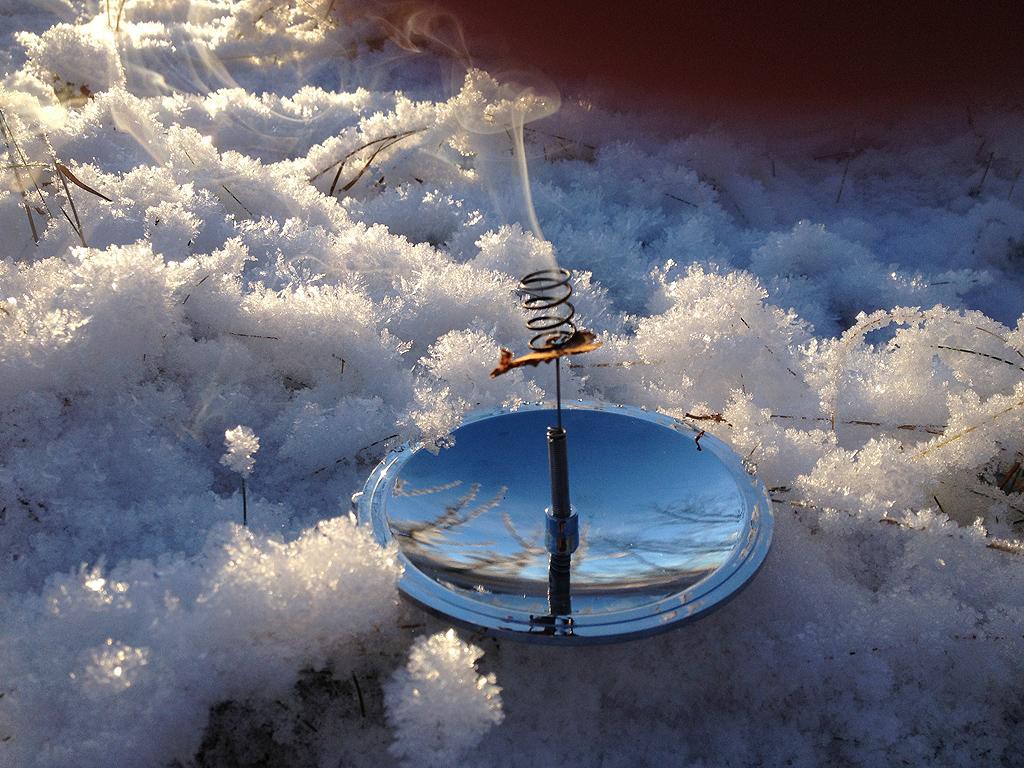




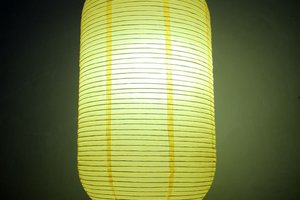
 xdylanm
xdylanm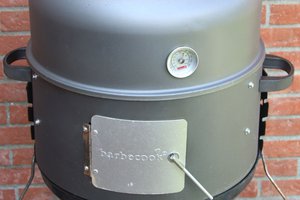
 Timescale
Timescale
 Christoph
Christoph
Why not use AISI 321 or 347 for at least some components?